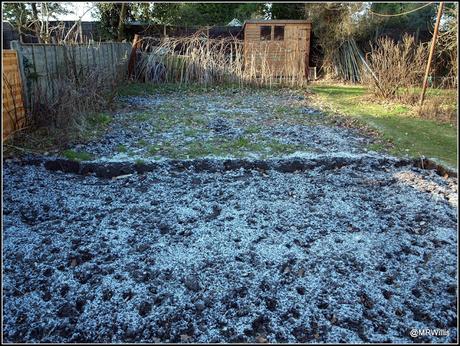
Instead of digging I decided to have a go at re-vitalising some of the currant bushes along the line of the fence, seen here at the left. [Please note, I do not claim to be an expert on pruning fruit bushes, so don't treat me as an authority!]
There seemed to be six bushes along this fence, and they were mostly pretty overgrown and very much in need of pruning.
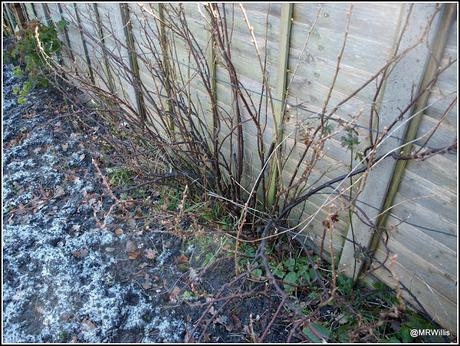
All the bushes had a lot of very old and dead wood, and many of the branches were drooping down almost to ground level.
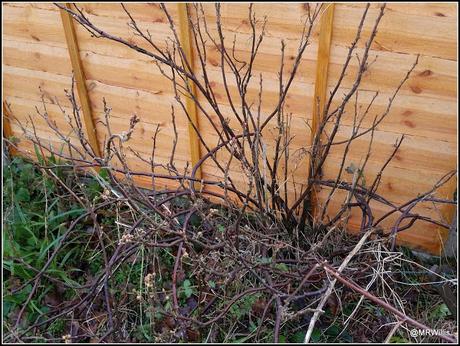
With currants, the wood tends to darken with age, so if it's black you can be sure it is several years old. Some of the stems were dry and brittle too, which is a sure sign that they need to be pruned out.

I'm not treating this post as a "How to prune currants" tutorial, so let me just say that with the aid of loppers and secateurs I took out lots of old and dead branches, and generally tidied-up the younger fresher ones, many of which were far too long and straggly. This photo shows part of the end result:
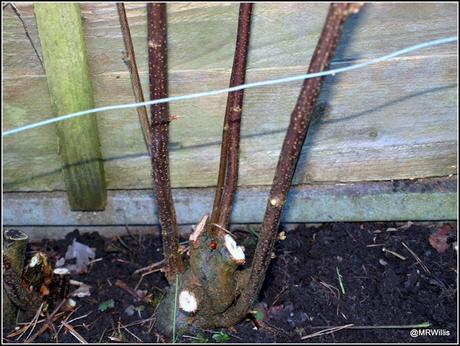
The base of this plant now supports 5 good upright stems.
One of the plants seemed to be totally dead. Its base was dry and brittle, and there were no young stems on it, so I decided to remove it completely. It turned out to be easier than I had expected to do this, because the roots were dead too. Removing this bush left a gap in the line, which was lucky in a way, in that when I started working on the third bush I found a stray sucker, which I separated from the parent bush, and later planted-up into the gap as a new bush.
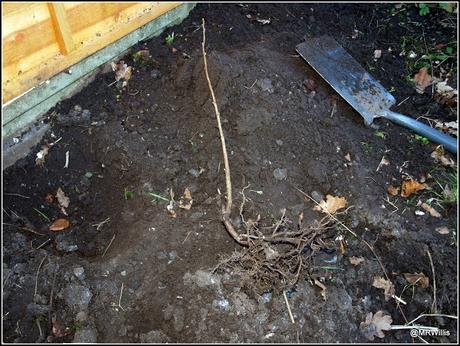
The stray sucker, aka new bush
The new bush can be seen between the two bricks.
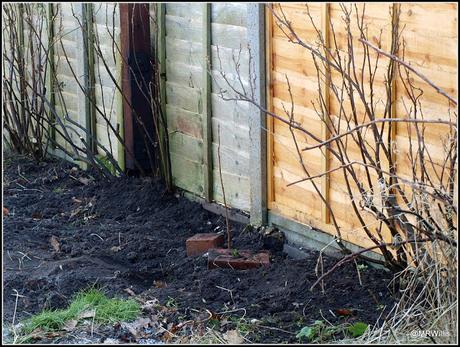
So in the one session (about an hour and a half) I pruned three bushes, and I am pleased with the results. The bushes look a lot neater now, and air-circulation around the fruit (when it arrives) will be much better.
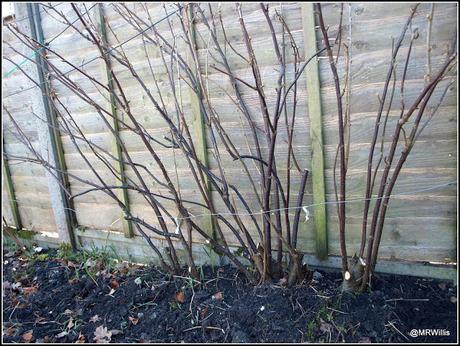
As well as pruning the bushes I took the opportunity to remove the weeds from around them too. There were lots of brambles, stinging nettles and couch grass, all of which must have been competing with the currants for nutrients from the soil.
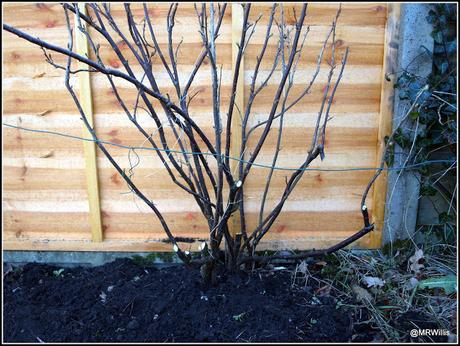
By the way, I have been calling these bushes simply "currants", but I'm now fairly sure that they are Blackcurrants, because their wood had a very distinctive aroma. In another part of the garden are some bushes that I believe will turn out to be Redcurrants.
You may be thinking "why doesn't he just ask the plot-owners what the bushes are?" Well, the truth of the matter is that I usually only see the lady of the house (the gentleman is not well and remains indoors most of the time), and she is a bit vague about the garden. I think in the past she used to leave the gardening to her husband! I asked this week about the Raspberries, but she has no idea what type they are. She only knows that they fruit in the Summer-time. I'm going to have to press her on this matter, because if the canes need cutting down, they need to be done soon.

The Raspberry canes
As I said earlier, when I started on this job, I thought there were six currant bushes. One was removed completely, but replaced by a new young bush. One of the others turned out to be three separate plants growing very close together. Next time I'll have to do the remaining (two?) bushes. It looks as if they will be even more of a challenge...
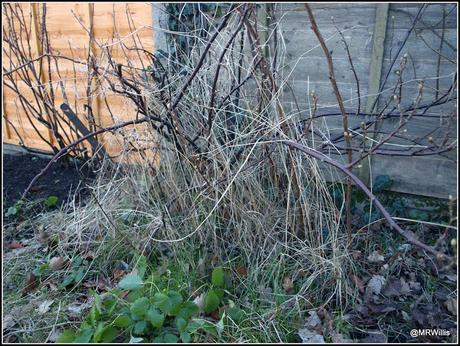
I've already noted the presence of the Strawberry plant here!

Like so much else in this garden, restoring these currant bushes to "working condition" was not a major task - I'd call it more of a tidy-up - but I think it will prove to be well worth the effort if I can get a good crop of fruit from them later in the year.
